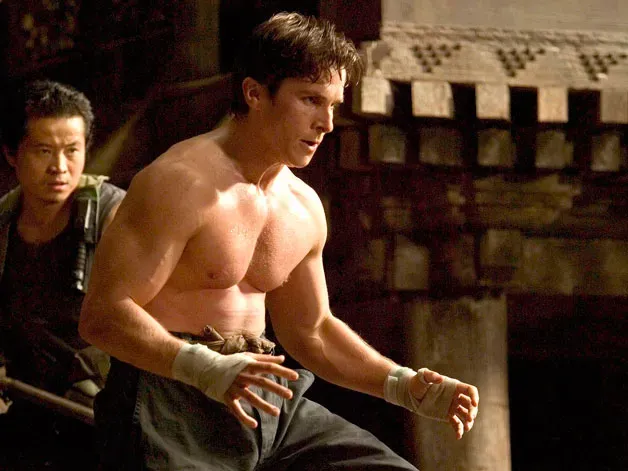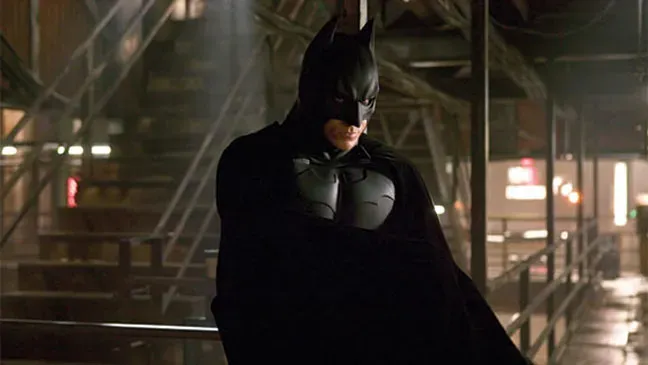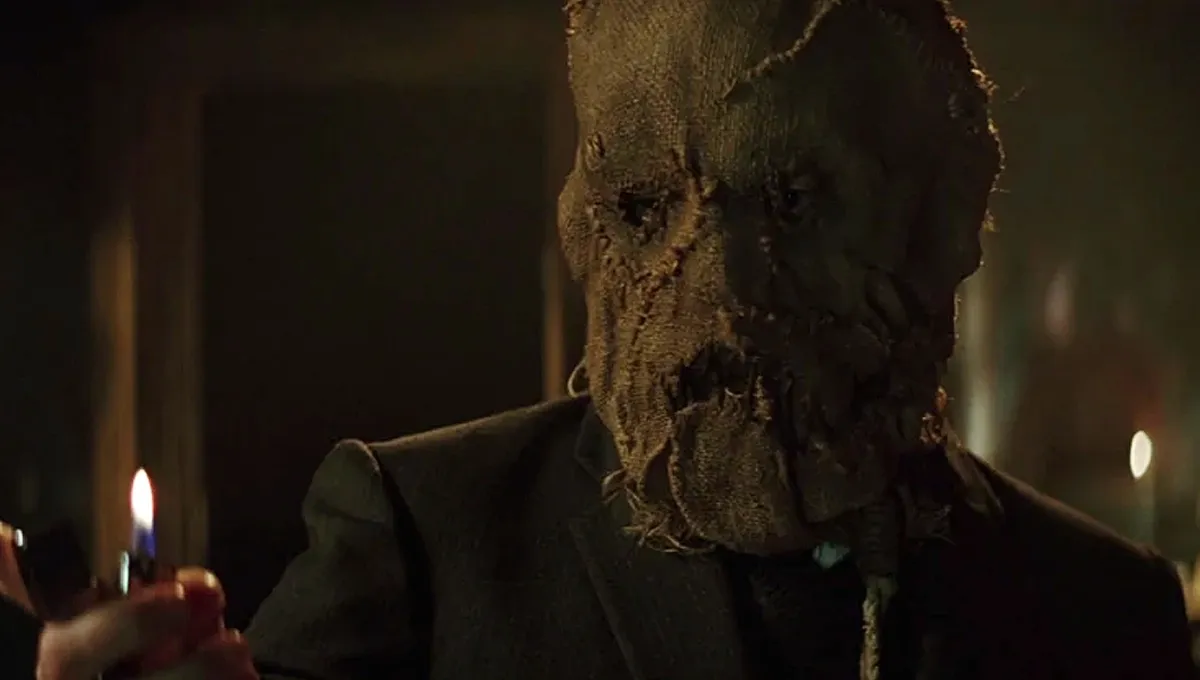Hollywood & Spine Archive: Darkest Knight, Part I
An overview of the novelization to BATMAN BEGINS, originally published in March 2021.

At the time, when Zack Snyder's version of Justice League was finally coming out, I went hog wild and published in three weeks a series of dives on the novelization to Christopher Nolan's Batman films. Other than Burton's, which I loved primarily as a kid, these are the only ones I really bother with. Like many, I am probably Batmanned out. But boy are these fun - and the novelizations are pretty good, too. (Originally published 3/15/2021)

Batman Begins by Dennis O'Neill (based on the original screenplay by Christopher Nolan and David S. Goyer; story by David S. Goyer; based upon characters appearing in comic books published by DC Comics - Batman created by Bob Kane [& Bill Finger]) (Del Rey, 2005)
The pitch: The Batman creation myth in straightforward form: wealthy orphan Bruce Wayne abandons his birthright and falls in with the League of Shadows, only to stop them from destroying his hometown of Gotham City.
The author: One of the men most qualified to adapt Batman to prose, Dennis O'Neill (1939-2020) was one of the Batman comic's best-known creatives. As a writer in the '70s, he helped steer the stories away from its campy '60s trappings and created this film's main villain, the mysterious Ra's Al-Ghul. As an editor in the '80s, '90s and '00s, he oversaw stories like Year One, The Dark Knight Returns, A Death in the Family, The Killing Joke and Knightfall - all of which would be referenced in some way in Nolan's Dark Knight trilogy.
The lowdown: Long before the age of Zack Snyder's Justice League, bowing on HBO Max this weekend, Warner Bros. had attempted to spin their Bat-emblazoned Rubik's cube in many directions in the late '90s and early '00s. Joel Schumacher's Batman Forever and Batman and Robin were commercial smashes in the '90s, but loathed by comic fans who wanted to see the darkness in the Dark Knight - grimmer than even Tim Burton's blockbuster Goth-pop interpretations.
Nolan, a quirky Brit whose neo-noir style and visual flair yielded critical hits like Memento and Insomnia, was tapped to co-write and direct Batman Begins - a loose take on the Year One arc with the addition of two yet-to-be-made-live-action villains: Dr. Jonathan Crane, an Arkham psychologist whose powerful fear toxin helped him threaten patients as The Scarecrow, and Ra's Al-Ghul, a seemingly immortal cult leader bent on destroying Gotham in response to its corruption and largesse.

Batman Begins and its wildly successful sequels generally did a solid job showing rather than telling what compelled Bruce Wayne to take on the Caped Crusader's mantle - complemented by generally grounded versions of the character's building blocks. (Batman's equipment is largely disused military tech, an interesting choice that would inform how superhero stories were told onscreen for the next decade-plus.) Nolan was always more interested in using Batman's deep comic lore as a foundation for lofty storytelling, rather than making his world rely on trivia tidbits. (Sorry, Martha.)
Rewatching Begins, knowing what the sequels will yield, it's fun to watch what seeds in this film get reaped in later ones. Christian Bale's growly voice as Batman - to this writer, a symbol of the character's unaddressed psychic damage - is far subtler here, save for the scene where Batman menaces a crooked cop. Gotham's geography, including the decaying monorail and slum borough in "The Narrows," feels more like a failed EPCOT experiment instead of the "it's Chicago" aesthetic in the other two films. It's also interesting that the series closer, The Dark Knight Rises, builds more on the plot threads of Begins than its fawned-over predecessor, The Dark Knight.
We've covered before what it's like to adapt the very visual Batman into prose with Craig Shaw Gardner's novelization of Burton's first film. [That issue will reprint here in June. -MD] As fun as that book was, O'Neill's is even better. He's born for the role as both a writer and an editor of Batman comics, and his proximity to so many compelling stories makes his work rather easy in knowing what pictures need to be painted in the mind's eye with no panels or splash pages to aid him.

As a result, many of the book's characters get brief bits of color to really set the mood where an image would do the trick. And that's not just the main characters or even the supporting characters. A research librarian who assists Bruce in his pre-Batman return to Gotham (more on her in a bit), news reporter Kassie Cane (a character who doesn't appear in the film - no relation to the comics' eventual Batwoman, even the guys working at the water plant when the sewer mains threaten to blow - all get names and a little bit of detail that make the Gotham of these pages feel lived in and engaging.
Perhaps most striking of all is Ra's Al-Ghul, whose backstory is supplied in part through journal entries that appear through the first third of the book alongside the action of the film's first act (which is told chronologically here instead of the intermittent flashbacks of the final cut). Through these passages, we learn about the League of Shadows' longtime commitment to destroying corrupt Western ideals (through World War II and earlier!) and the leader's own quest for immortality (through the unnamed Lazarus Pit concept, which was made slightly more literal in The Dark Knight Rises) as well as the want of a son after fathering daughters in his lifetime. (One of them is noted here: comics character Talia, who becomes a key player in Rises and is suggested in this story that Ra's join her with Bruce Wayne in marriage.)
Basically, reading Batman Begins not only offers a clear picture in the mind's eye of a Batman origin story but this Batman origin story. O'Neill's prose and style, rightfully treasured by Batfans, is in fine form here - one of the prime 21st century examples of how to make a compelling novelization. He may even improve on the finished product in places, lacking some of the film's cartoonier dialogue. (Lt. James Gordon's "I gotta get me one of those" reaction to seeing the Batmobile - named as such in the book - is one of the trilogy's weakest moments.)

The cutting room floor: Nolan famously tries to avoid extraneous footage in his films, so O'Neill more than made up for it, adding a 30-page sequence that seems to have no equivalent in the screenplay. It takes place after Bruce Wayne returns to Gotham; before establishing his Batman alter-ego, he seeks out as much information as he can on the League of Shadows. His exploits take him to the dilapidated Gotham University (working with an aforementioned spunky researcher) and a gallery auction in Manhattan, where a myriad of vintage documents connected to the League are to be auctioned off.
Of course, both the owner and the documents mysteriously disappear in an explosion - but Bruce breaks into the gallery (using a primitive version of his Bat-gadgets) to find facsimiles and read through them. They include dense plotting that I'm not even sure has a precedent in the comics, involving an ancient tale of a physician attempting to heal a cursed family (the Salimbok?), in part through restoring health by digging a pit in the ground and burying the afflicted. It wouldn't have fit in the film, but it is fun to see Batman doing some legitimate detective work and also a hoot to read O'Neill going hard on one of his most famous creations.
The book's ending is filled out a bit too, helping partially explain how much time elapses between Batman Begins and The Dark Knight (Batman receiving the Joker card is explicitly months after the events of the first film, further underlining that he's been tailing his nemesis for some time when the second film picks up.) There's also an admission that Ra's Al-Ghul's body is never found in the wreckage of the monorail crash that defeats him, and a somber end tag where Bruce buries the bloodied ninja costume he wore in the League next to his parents' graves, as an acknowledgement of his past.

The last word: O'Neill knew what readers were expecting - either people who liked the movie enough to pick up the book, or those destined to do so by being a Batman title - and he richly rewarded them here. One can only hope Justice League fans feel nearly as gratified...we think.
